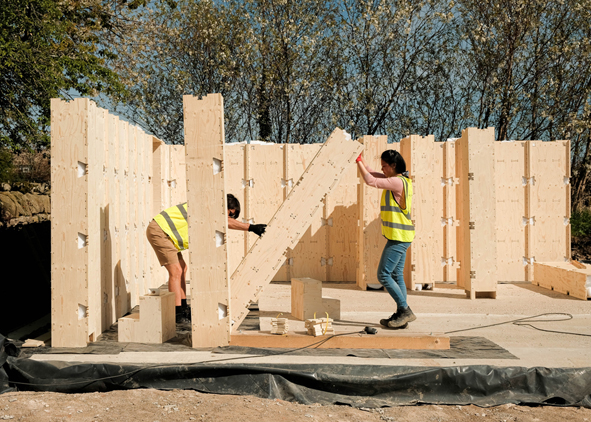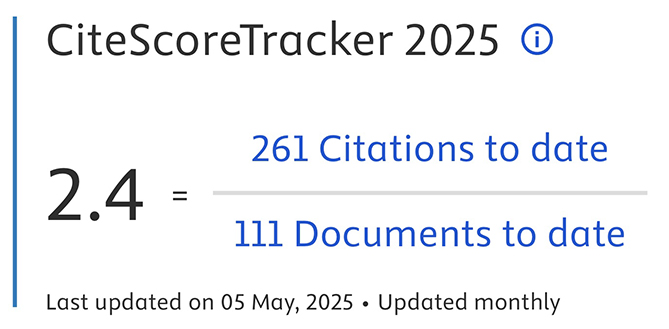Verso un progetto circolare, tra architettura e allestimento. Piattaforme digitali per il riuso
DOI:
https://doi.org/10.19229/2464-9309/12212022Parole chiave:
transizione guidata dal design, piattaforme collaborative, mediazione digitale, economia circolare, riusoAbstract
Lo sviluppo sostenibile e la transizione digitale trovano ampio spazio nel dibattito intorno alle discipline del progetto che, tuttavia, fanno proprio il tema a velocità diverse. Se la ricerca per la progettazione architettonica e urbana lavora da tempo verso l’innovazione dei paradigmi progettuali e costruttivi in senso sostenibile e circolare, il design espositivo tarda ad integrare questi aspetti nelle proprie strutture creative e gestionali. In quest’ottica la transizione digitale rappresenta una grande opportunità per lo sviluppo di sistemi integrati per filiere produttive circolari. Il testo esplora lo stato dell’arte nei settori dell’architettura e dell’allestimento, individuando traiettorie di innovazione dentro casi di piattaforme collaborative emblematiche, sottolineandone limiti e reciproche lezioni apprese.
Downloads
##plugins.generic.articleMetricsGraph.articlePageHeading##
Riferimenti bibliografici
Ahmed, Z. A., Qaed, F. and Almurbati, N. (2020), “Enhancing Museums’ Sustainability Through Digitalization”, in 2020 Second International Sustainability and Resilience Conference – Technology and Innovation in Building Designs, IEEE, pp. 1-4. [Online] Available at: doi.org/10.1109/IEEECONF51154.2020.9319977 [Accessed 05 October 2022].
Bach, B., Stefaner, M., Boy, J., Drucker, S., Bartram, L., Wood, J. Ciuccarelli, P., Engelhardt, Y., Köppen, U. and Tversky, B. (2019), “Narrative Design patterns for interactive storytelling”, in Henry Riche, N., Hurter, C., Diakopoulos, N. and Carpendale, S. (eds), Data-Driven Storytelling, A K Peters/CRC Press, New York.
Baiani, S. and Altamura, P. (2018), “Superuse e upcycling dei materiali di scarto in architettura – Progetto e sperimentazione | Waste materials superuse and upcycling in architecture – Design and experimentation”, in Techne | Journal of Technology for Architecture and Environment, vol. 16, pp. 142-151. [Online] Available at: doi.org/10.13128/Techne-23035 [Accessed 05 October 2022].
Campioli, A., Dalla Valle, A. Ganassali, A. and Giorgi, S. (2018), “Progettare il ciclo di vita della materia – Nuove tendenze in prospettiva ambientale | Designing the life cycle of materials – New trends in environmental perspective”, in Techne | Journal of Technology for Architecture and Environment, vol. 16, pp. 86-95. [Online] Available at: doi.org/10.13128/Techne-23016 [Accessed 05 October 2022].
Choppin, J. and Delon, N. (2014), Matière grise – Matériaux, réemploi, architecture, Editions du Pavillon de l’Arsenal, Paris.
Ciorra, P. and Marini, S. (eds) (2011), Re-cycle – Strategie per la casa, la città e il pianeta – Catalogo della mostra, Electa, Milano.
ECESP – European Circular Economy Stakeholder Platform (2021), Circular Buildings and Infrastructure. [Online] Available at: eeb.org/wp-content/uploads/2022/04/circular_buildings_and_infrastructure_brochure.pdf [Accessed 05 October 2022].
Epifani, S. (2020), Sostenibilità digitale – Perché la sostenibilità non può fare a meno della trasformazione digitale, Digital Transformation Institute, Roma.
European Commission (2022), 2022 Strategic Foresight Report – Twinning the green and digital transitions in the new geopolitical context. [Online] Available at: ec.europa.eu/info/files/strategic-foresight-report-2022_en [Accessed 05 October 2022].
European Commission (2021), Level(s) – What’s in it for construction companies and contractors, manufacturers, asset managers, facilities managers, and occupants? [Online] Available at: data.europa.eu/doi/10.2779/94980 [Accessed 05 October 2022].
European Commission (2019), Communication from the Commission to the European Parliament, the Council, the European Economic and Social Committee and the Committee of the Regions – The European Green Deal, document 52019DC0640, 640 final. [Online] Available at: eur-lex.europa.eu/legal-content/en/ALL/?uri=CELEX:52019DC0640 [Accessed 05 October 2022].
European Commission (2018), Directive (EU) 2018/851 of the European Parliament and of the Council of 30 May 2018 amending Directive 2008/98/EC on waste, document 32018L0851. [Online] Available at: eur-lex.europa.eu/legal-content/EN/TXT/?uri=CELEX%3A32018L0851 [Accessed 05 October 2022].
European Commission (2008), Directive 2008/98/EC of the European Parliament and of the Council of 19 November 2008 on waste and repealing certain Directives, document 32008L0098. [Online] Available at: eur-lex.europa.eu/legal-content/EN/TXT/?uri=celex%3A32008L0098 [Accessed 05 October 2022].
Franchino, R., Frettoloso, C. and Pisacane, N. (2019), “Tecnologia BIM e Innovazione Materiale – La Dimensione Ambientale | BIM Technology and Material Innovation – The Environmental Dimension”, in Agathón | International Journal of Architecture, Art and Design, vol. 5, pp. 41-50. [Online] Available at: doi.org/10.19229/2464-9309/552019 [Accessed 05 October 2022].
Giglio, F., Lauria, M. and Lucarelli, M. T. (2021), “Oltre la cultura dello scarto, verso processi circolari | Beyond the culture of waste, towards circular processes”, in Techne | Journal of Technology for Architecture and Environment, vol. 22, pp. 16-21. [Online] Available at: doi.org/10.36253/techne-11535 [Accessed 05 October 2022].
Giorgi, S. (2020), “Strumenti di supporto al progetto per dinamiche di economia circolare in edilizia”, in Perriccioli, M., Rigillo, M., Russo Ermolli, S. and Tucci, F. (eds), Il progetto nell’Era Digitale – Tecnologia, natura, cultura, Maggioli Editore, Santarcangelo di Romagna, pp. 243-245. [Online] Available at: research.gsd.harvard.edu/zofnass/files/2021/02/e-book_-AAVV_Design-in-the-digital-age.pdf [Accessed 05 October 2022].
Giorgi, S., Lavagna, M. and Campioli, A. (2019), “Circolare e sostenibile – Verso l’ottimizzazione dei flussi materici nei processi di riqualificazione edilizia in Italia”, in Ingegneria dell’Ambiente, vol. 6, issue 2, pp. 151-163. [Online] Available at: ingegneriadellambiente.net/ojs/index.php/ida/article/view/212 [Accessed 05 October 2022].
ISO 20121:2012 (UNI ISO 20121:2013), Sistemi di gestione Sostenibile degli Eventi.
ISPRA (2022), Rapporto rifiuti speciali – Edizione 2022. [Online] Available at: isprambiente.gov.it/files2022/pubblicazioni/rapporti/rapportorifiutispeciali_ed-2022_n-367_versioneintegrale.pdf [Accessed 05 October 2022].
Lanzigher, M. (2021), “[Sviluppo Sostenibile] Musei e crisi ambientale”, in Agenzia di stampa Cult, 04/05/2021. [Online] Available at: agenziacult.it/interni/sviluppo-sostenibile-musei-e-crisi-ambientale [Accessed 05 October 2022].
Leibing, E. and Blaim, M. A. (2020), “The Pilot Project Data – A comparative View”, in Brünger, S., Eppmann, T. and Mergel, K. (eds), Carbon Footprinting in Cultural Institution – Documentation of the Pilot Project and Work Materials, Kulturstiftung des Bundes, German Federal Cultural Foundation, pp. 18-20. [Online] Available at: kulturstiftung-des-bundes.de/fileadmin/user_upload/Klimabilanzen/Carbon-Footprinting-in-Cultural-Institutions.pdf [Accessed 05 October 2022].
Losasso, M. (2021), “Transizione circolare – Scenari per il futuro del progetto | Circular transition – Scenarios for the future of design”, in Techne | Journal of Technology for Architecture and Environment, vol. 22, pp. 7-9. [Online] Available at: doi.org/10.36253/techne-11532 [Accessed 05 October 2022].
Maida, D. (2021), “La Germania chiede ai musei qual è il loro impatto sull’ambiente”, in Artribune, 31/01/2021. [Online] Available at: artribune.com/dal-mondo/2021/01/germania-musei-impatto-ambiente/ [Accessed 05 October 2022].
MIC – Ministero della Cultura (2022), 155 Milioni di Euro per le imprese culturali e creative. [Online] Available at: creativitacontemporanea.beniculturali.it/wp-content/uploads/2022/05/Cartella-stampa-06.05.2022.pdf [Accessed 05 October 2022].
Nastro, S. (2021), “Online il carbon calculator di Gallery Climate Coalition, il network delle gallerie per l’ambiente”, in Artribune, 22/01/2021. [Online] Available at: artribune.com/arti-visive/arte-contemporanea/2021/01/gcc-carbon-calculator-gallerie-ambiente/ [Accessed 05 October 2022].
Rosa, P. (2003), “Un’esposizione partecipata”, in Manzini, E. and Jégou, F. (eds), Quotidiano sostenibile – Scenari di vita urbana – Un catalogo di soluzioni promettenti, Edizioni Ambiente, Milano, pp. 256-257.
Rota, M. (2019), Musei per la sostenibilità integrata, Editrice bibiliografica, Milano.
Russo, A. (ed.) (2021), Pensare e fare economia circolare – Dal Green New Deal Europeo ai territori, come trasformare la strategia in impianti, Guerini e Associati, Milano.
Senesi, A. (2022), “Design week Milano, Alessia Cappello: Troppo traffico, i grandi eventi devono essere più sostenibili”, in Corriere della Sera, 13/06/2022. [Online] Available at: milano.corriere.it/notizie/cronaca/22_giugno_13/design-week-milano-alessia-cappello-troppo-traffico-grandi-eventi-devono-essere-piu-sostenibili-73c3f8a6-ea7d-11ec-afb1-eda73379fb39.shtml [Accessed 05 October 2022].
van Hinte, E., Peeren, C. and Jongert, J. (2007), Superuse – Constructing new architecture by shortcutting material flows, nai010 publishers, Rotterdam.

##submission.downloads##
Pubblicato
Come citare
Fascicolo
Sezione
Categorie
Licenza
Copyright (c) 2022 Davide Crippa, Massimiliano Cason Villa, Barbara Di Prete, Lucia Ratti, Agnese Rebaglio, Marco Zanini, Francesca Zanotto

TQuesto lavoro è fornito con la licenza Creative Commons Attribuzione 4.0 Internazionale.
AGATHÓN è pubblicata sotto la licenza Creative Commons Attribution License 4.0 (CC-BY).
License scheme | Legal code
Questa licenza consente a chiunque di:
Condividere: riprodurre, distribuire, comunicare al pubblico, esporre in pubblico, rappresentare, eseguire e recitare questo materiale con qualsiasi mezzo e formato.
Modificare: remixare, trasformare il materiale e basarti su di esso per le tue opere per qualsiasi fine, anche commerciale.
Alle seguenti condizioni
Attribuzione: si deve riconoscere una menzione di paternità adeguata, fornire un link alla licenza e indicare se sono state effettuate delle modifiche; si può fare ciò in qualsiasi maniera ragionevole possibile, ma non con modalità tali da suggerire che il licenziante avalli l'utilizzatore o l'utilizzo del suo materiale.
Divieto di restrizioni aggiuntive: non si possono applicare termini legali o misure tecnologiche che impongano ad altri soggetti dei vincoli giuridici su quanto la licenza consente di fare.
Note
Non si è tenuti a rispettare i termini della licenza per quelle componenti del materiale che siano in pubblico dominio o nei casi in cui il nuovo utilizzo sia consentito da una eccezione o limitazione prevista dalla legge.
Non sono fornite garanzie. La licenza può non conferire tutte le autorizzazioni necessarie per l'utilizzo che ci si prefigge. Ad esempio, diritti di terzi come i diritti all'immagine, alla riservatezza e i diritti morali potrebbero restringere gli usi del materiale.


















































































